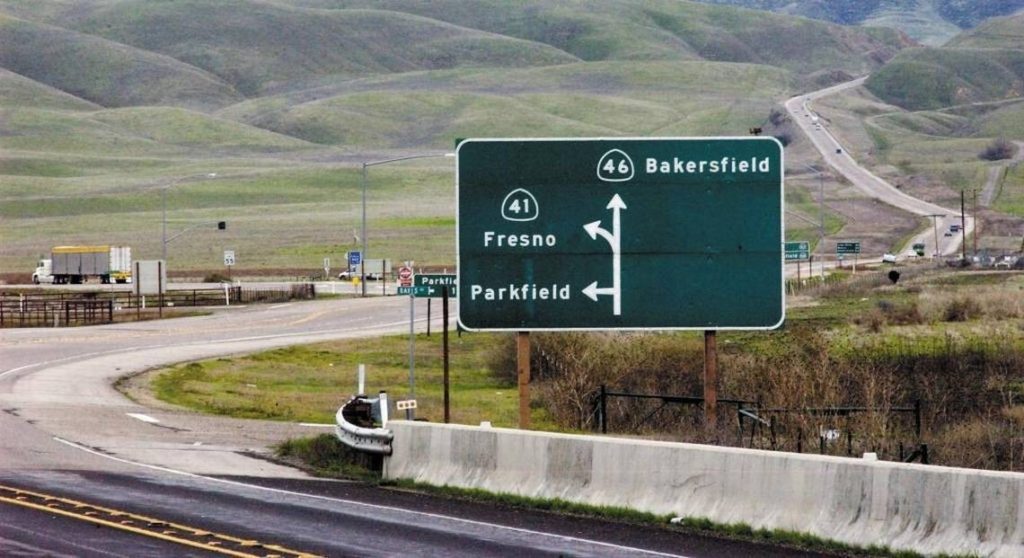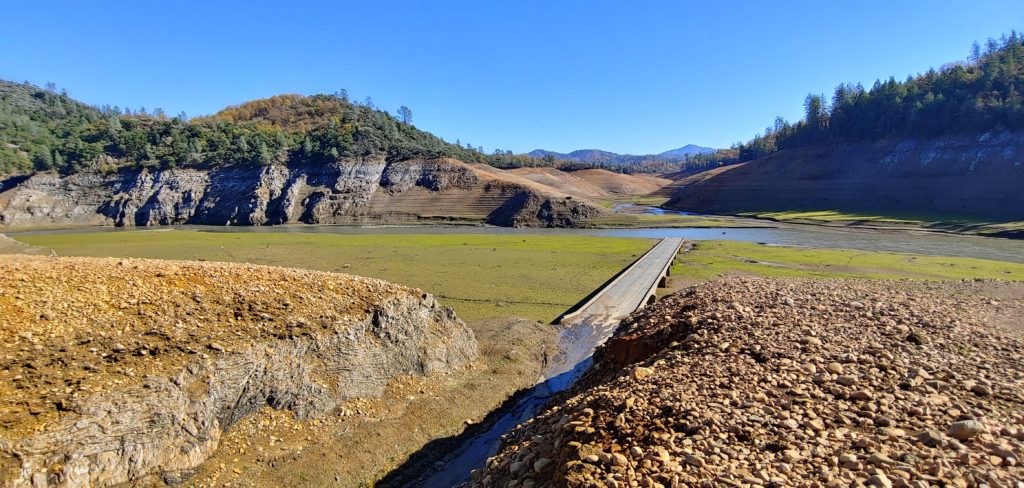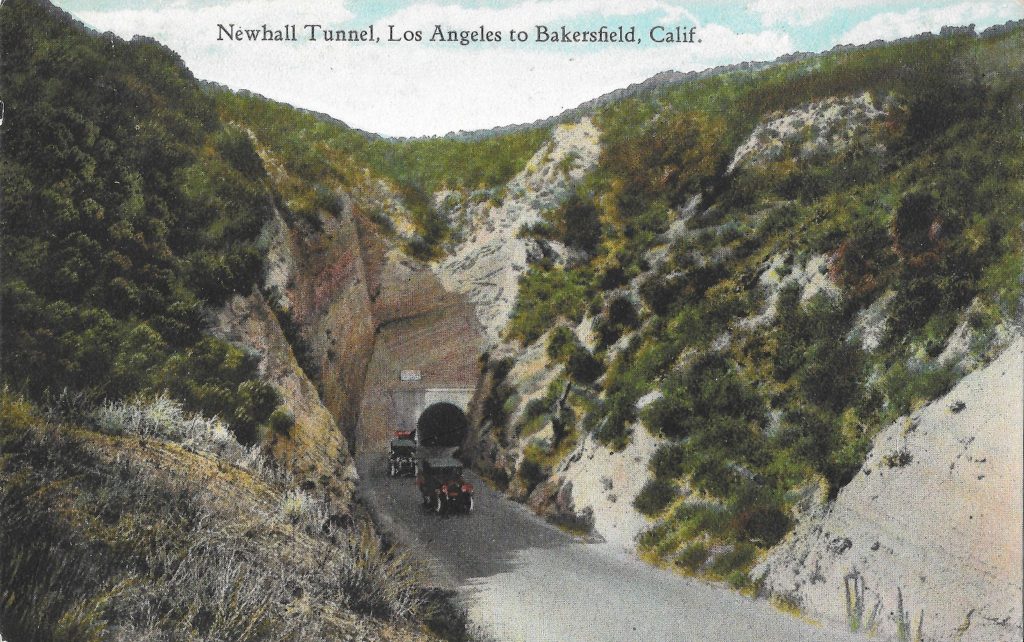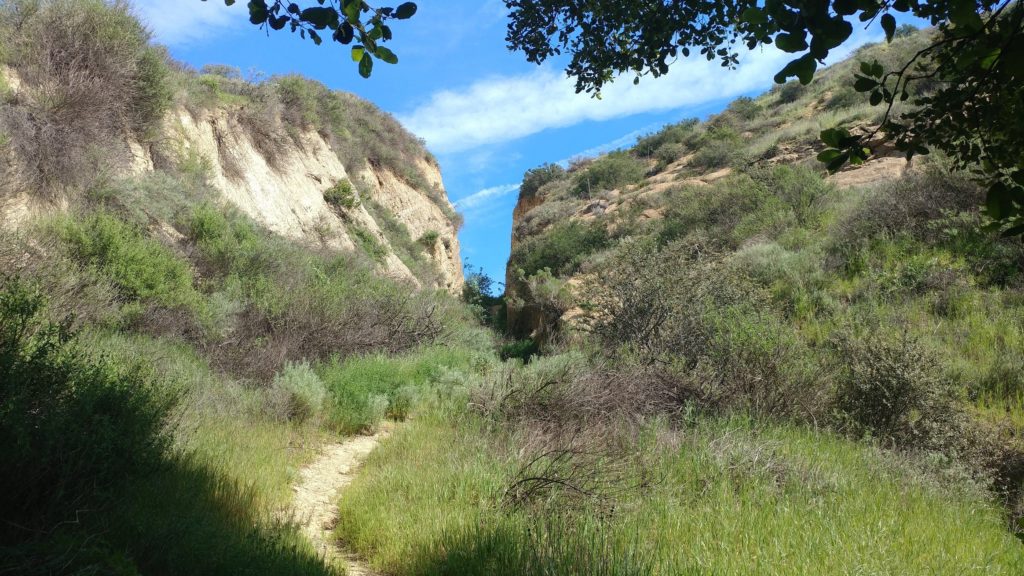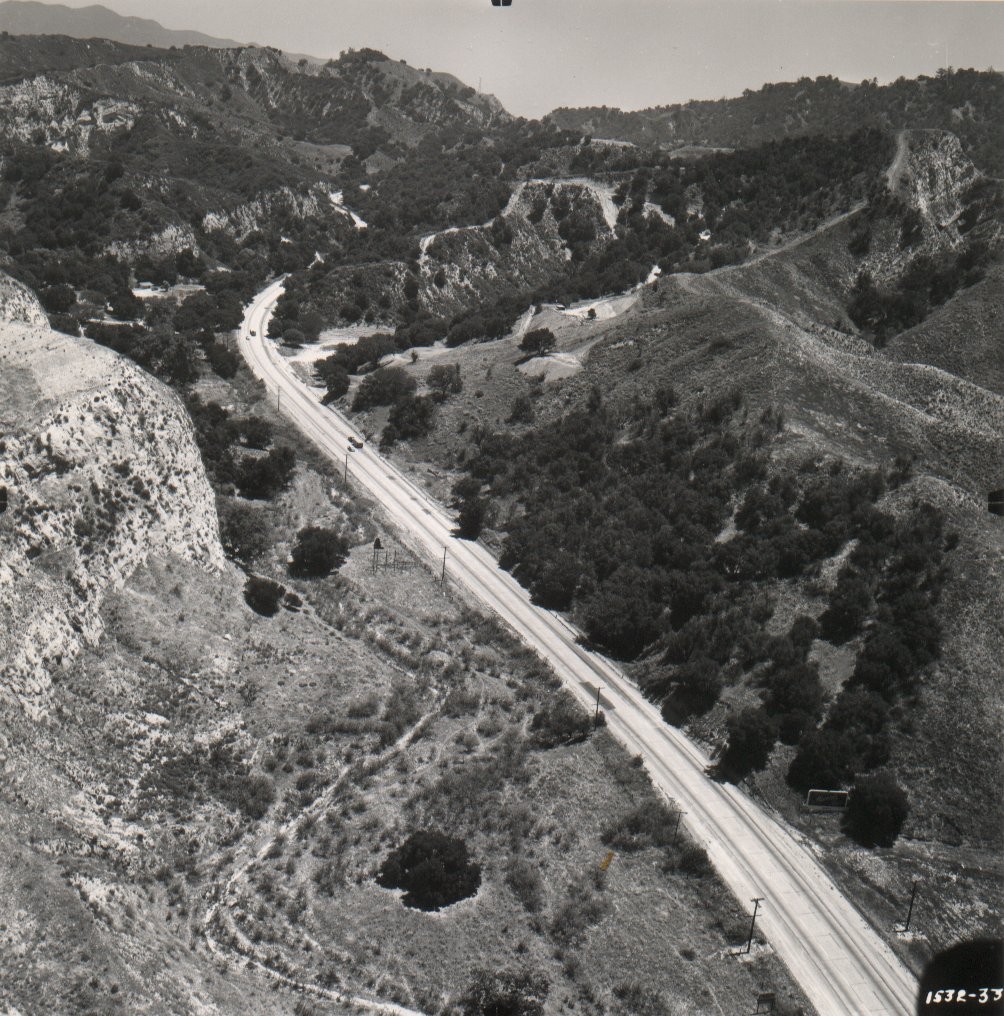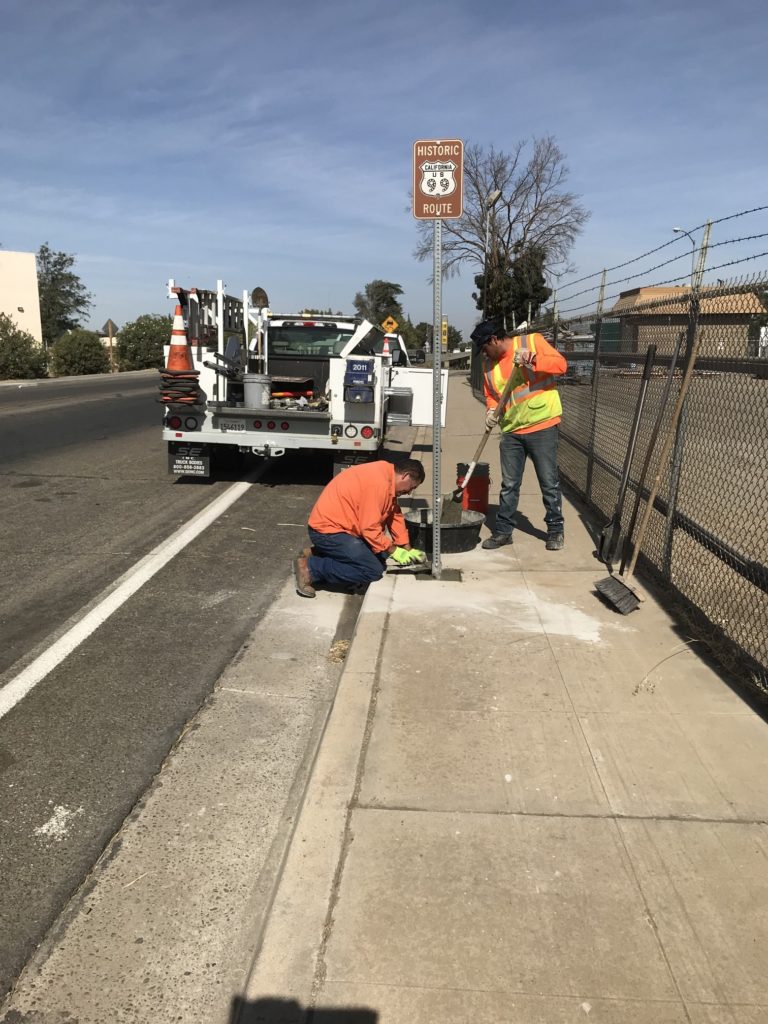“James Dean’s Last Ride”
by Member #15
Sandy and I live eight miles East of Auburn in Cool, California. We enjoy vacationing every year at Avila Beach. Driving the roads to picturesque Avila Beach is where this story begins.
From Cool we travel South on I-5 and turn off at State Route 41 and cross over onto Route 46 west at the junction; and then onto the 101 south toward Avila Beach. The junction of Routes 41 and 46 are in the middle of nowhere, at the end of a long drive; and even though I had seen the sign marking the “James Dean Memorial Junction” more than once—what I was reading didn’t register with me for two or three years. Finally, I had to ask: “Was this lonely Y Junction, located in a cow pasture among the parched & rolling foothills of San Luis Obispo County, the place where the world-famous actor was killed in a nearly head-on collision?” It didn’t seem possible to me. I began looking closely into this accident and James Dean’s short life. It became an ever-expanding whirlpool of persons / time / places and happenstance. And, oh yes, it’s a tale of some very bad driving.
James Dean’s last picture was “Giant” staring Rock Hudson and Elizabeth Taylor. James Dean had a supporting role in that movie.
Elizabeth Taylor’s number 4 husband was Eddie Fisher. In his autobiography, Eddie, wrote this about Elizabeth after their 1964 divorce: “Ah, Elizabeth Taylor! She is every man’s dream, the most beautiful woman in the world… with the morals of a truck driver!”
About two weeks after Dean competed filming his part in “Giant” he was off to the races.
Dean had a reputation of taking a lot of unnecessary risks when driving hot cars or motorcycles on public roads. More recently he had taken up car racing in the Southern California area. On September 30, 1955, Dean and his Mechanic Rolf Wütherich were on their way to enter Dean’s brand-new “Little Bastard” Porsche in an SCCA Club race being held at the Salinas Airport. There were two options when it came to getting the Spyder to the race track: Dean could’ve used his personal tow vehicle and a trailer he borrowed to haul his car, which was the original plan. Or he could’ve driven his Spyder on the streets, in traffic, over the long drive to the track. He chose the latter, which was not unusual for the competitors in this race to do. However, in his memoir, “Jimmy & Me”, friend and follow race car driver, Lew Bracker, wrote that he would never have let Dean drive that car to the track if he had known about it before hand.
In 1955 there was no Interstate-5, rather, there was HWY 99 running North and South along a somewhat similar alinement. Also, there was no State Route 46 as of yet. The road being used at that time was Route 466.
James Dean and his mechanic Rolf Wütherich drove north from the Sherman Oaks area to join HWY 99. Later, he drove over the four-lane Ridge Route Alternate [HWY 99]. When he made a short stop at Blackwell’s Corner, he bragged to fellow racecar driver, Bruce Kessler, that he had driven his Porsche Spyder 550 at one hundred and twenty mph over a section of HWY 99. Most likely a downhill section in the Wheeler Ridge area.
Rolf Wütherich was a German national who was employed in the Porsche Factory”s racing department. During World War II, he served in the Luftwaffe as a teenaged glider pilot; paratrooper and aircraft mechanic. His time in the Luftwaffe instilled in him the lifetime love of high performance machinery on which he later became an expert. It is rumored that taking on the more mature Wütherich as Dean’s ‘race team’ was part of a deal in getting the owner of Competition Motors, Johnny von Newman, to agree to sell the Spyder to James Dean in the first place. Von Newman definitely didn’t think that Dean had enough racing experience to handle the latest and more powerful model. Dean already owned a Porsche Super-Speedster 356, which was considered more of an entry level racer as compared to the Spyder 550.
The fatal wreck occurred at the junction of State 41 and US 466, near the town of Cholame, California, when a Cal Poly student, who was headed east on 466, made a left-hand turn at Route 41 in front of Dean’s oncoming Spyder, which was heading west on 466. Both drivers were exceeding the posted speed limit, however, I’ve been over both Routes 46 and 41(not to mention over the remains of old 466) and nobody drives at the posted speed limit in that area—including myself—and I don’t think anybody ever has. Just how fast Dean was driving is a subject of considerable controversy to this day. The controversy started with the two original investigating CHP officers who couldn’t agree on which party was to blame or how fast the drivers were traveling. During the wreck, Rolf was thrown clear of the Spyder and survived, but spent a year in the hospital and likely had some very ugly and permanent personality changes that got him into serious trouble.
*************************************************************
As for myself, I’ve hiked over all the remaining sections of old Route 466 in the Polonio grade area of Antelope Road [CA 46] in both directions a number of times. There are three distinct remaining sections—Starting at the Antelope Exit near a place called Poison Water Pond that can be seen on Google Earth, you can walk west unimpeded all the way to the Memorial Junction. Also you can walk east from the same starting point [Antelope Exit] to where old 466 has been buried under the modern Route 46. You’ll have to climb over one barbed wire fence in the small parking area to get onto this section. There is another short section on the North side of 46, which actually is a continuation of old 466 as it comes out from under the 46 roadbed mentioned above. This last section is accessed from 46 westbound and is just across 46 from the Polonio Pass Pumping Section. The entire 466 remains total about seven miles in one direction give-or-take. Old 466 throughout the Polonio Pass area looks more like the 1915 era Ridge Route through the Tehachapi Mountains than it does the modern California, State Route 46.
I’ve heard that some people have driven motorcycles over some or all of historic 466. I think you would need an ATV to drive over all of 466 in a four wheel vehicle. Personally, I wouldn’t take a motor vehicle up there because it damages the exposed road surfaces and increases your chance of being spotted. Keep in mind that all of the remaining sections are on 100% private property. Standing out might get you stopped. Also, I would never take a pet dog with me to 466 because it’s a cattle ranch, and ranchers have the legal right to shoot any dog that they even think is worrying their cattle and / or you might get a visit from the CHP. However, I think the odds of any of that happening to you are pretty low. Plan your visit to the James Dean Memorial Junction area in the spring time to see the beauty of the green hills and flowers in bloom.
There are a number of interesting side trips to take regarding James Dean history in the Junction area. Blackwell’s Corner has been on 46 since before there was a 46 and long before Dean stopped there on his last ride. In fact, it was the last controlled stop he ever made. Blackwell’s has a small James Dean museum in the far corner of the shop, which includes Dean’s driving goggles picked up on 466 immediately after the accident (one rumor has it that these googles were actually being worn by Rolf on that day). Blackwell’s Corner Store is a great place to shop for olives; pickles and many other delicacies. It’s a must stop for Dean Fans. How James Dean got to the Blackwell’s Corner area, and beyond, is also a subject of controversy. He either drove north on HWY 99 toward Famoso, the city lost in time, and then turned directly onto 466 westbound, or he took, the so-called “Racers Road”, which starts at the HWY 99 cutoff onto 33/166 toward Maricopa and the town of Taft et cetera. The oil derricks along the Racer’s Road are reminiscent of scenes out of the movie “Giant”. Both these routes go by Blackwell’s Corner. I’ve driven over these two routes in both directions a number of times as well. Frankly most of this countryside is ‘lost in time’. Many places look as if they haven’t changed since 1955. I like driving through this general area—it’s an instant ‘History Rush’, for me.
I would like to give a shout out to some of the people I’ve asked questions of over several years regarding James Dean and his final ride.
Shannon Wafford, who fact-checked this article and made helpful suggestions, has hosted the annual James Dean Memorial run for the last six years; and has learned a great deal of insider’s information & made many invaluable contacts along the way. This run starts in Hollywood and ends in Salinas (you can pick it up on any part of the route with previous arrangement with Shan). Shan is a film maker and custom car builder with some 30 years of experience. He knows how cars perform on the race track. http://www.facebook.com/jamesdeanslastdrive
http://www.corvettesandcustoms.com
Michael Ballard who encouraged me to write this article. He has an encyclopedic knowledge of all the SoCal highways and byways; and their histories. He must have an amazing photographic memory:
Harrison Irving Scott who was very personally moved when he first heard that James Dean had been killed when it occurred back in 1955. Scottie is the very embodiment of the Ridge Route’s history today. He has written two books regarding the Ridge Route and a number of articles and has given many interviews. He was the subject of Huell Howser’s “Road Trip America” the “Ridge Route-2003 Season 1 Episode 22”: http://www.ridgeroute.com/
Lee Raskin took the time to answer my many questions regarding James Dean early on. He is the author of excellent books on this and related subjects, including “James Dean on the Road to Salinas” 2015 :
https://www.stanceandspeed.com/lee-raskin/
I’ll attempt to answer questions you may have… as others have answered my questions:
manxcat2@sbcglobal.net
December Presentation
Join us on December 7th, 2021 for a presentation on the Historic Ukiah-Tahoe Highway Association by Mike Herman. He will discuss the Historic Ukiah-Tahoe Highway Association and a Travel Guide that he wrote about Historic US 99W in California, “The Forgotten Highway”. At this meeting, we will cover some of the ups and downs of trying to get the Association started. We will also discuss how this turned into writing several Travel Guides including the one about US 99W. We hope that you can attend the Zoom Meeting on Dec. 7th at 6pm.
https://us06web.zoom.us/meeting/register/tZEpf-2gqj0oG9Dz7_t9OREmeuTAf84A5EgX
Highway 99 Discussion Forums
We restarted our online discussion forums for Historic Highway 99. Come join in! Tell your Highway 99 stories, discuss your favorite place along the road, learn about the history, and more!
https://historic99.org/forums/
Upcoming Projects
Things are looking up! We have a few projects in the works at various levels now. In Madera County, we are working on posting signs to mark the Pine and the Palm along Highway 99. At this time, we are in the design phase for the signs. We are also looking into getting it designated a “Historic Landmark”, which is something we will need help with. We intend to work with local historical societies, Madera County, and Caltrans to get this done.
We will also be working with Caltrans District 2 to have Historic Route signs posted along State Highway 263 between Yreka and Hornbrook along the Historic Shasta River Canyon alignment. After surveying the route, we have determined that six signs should be posted. These signs would be posted at the 3/263 junction, 1931 Pioneer Bridge, and at the 96/263 junction.
If you have an idea for a project for the 99 Association or would like to get involved, let us know!
Board Position Open
We are currently seeking a Treasurer for our organization to manage our finances and be a part of the decision-making process. If you are interested, or know someone that might be, contact us. We’d love to have you as a part of our team and help keep Historic US 99 alive in California!
Membership and Donations
As we slowly ramp up our efforts to get Historic Route signage placed in various cities and historic locations such as the Pine and Palm, we need your support. You can do this by becoming a member, donating money, or by volunteering with our Association. We are a 501(c)3 non-profit corporation and your donations may be tax deductible. Why not help reduce your tax burden for 2022 by donating prior to the new year? We can also use your help with some of our projects, website, and our newsletter. Having someone local to act as our ambassador or liaison would be of great help.
We do wish to thank all those that have donated and become members thus far. Our most recent project in Madera couldn’t have happened without your support!
Featured Photo
Lake Shasta got down to its second lowest level since 1944 when it started filling. On October 21, 2021, the lake reached 882.24′, which is 184.76′ below full pool. By the time I visited on November 9, 2021, the lake had only risen to 889′, still leaving the bulk of US 99 still exposed. Our featured photo shows what that level means. Here, Salt Creek joins the Sacramento River at the former townsite of Pollock. The river has shifted to flow through the townsite itself, with the former river-crossing span left dry. Soot from passing steam locomotives along the former Southern Pacific Railroad can also be seen on the bridge. It is amazing how much is intact despite this bridge only being above water for a few short periods since 1944. As of this writing, the level is still only at 895′.
Errata
Starting January 2022, our meetings with be bi-monthly, as will our newsletters. More information will be posted on our Meetings and Newsletter pages soon.

